I was privileged to taste a number of remarkable wines in a 10-day period in late September. In fact, I have never before tasted as many great aged wines in such a short period of time in my entire life. It was not possible to take detailed notes on these, since they were served at table, but here are a few brief impressions.
I would like to acknowledge the outrageous generosity of Tim Mc Cracken who contributed most of the wines, as well as Ian Amstad and others.
Tim had rented a château in the Entre-Deux-Mers (Château Casanova in Saint-Sulpice-et-Cameyrac) to celebrate his 50th birthday and invited friends from seven different countries, all wine lovers, to come and spend a memorable weekend.
The wines at the first dinner were shared with Canadian friends Danny and Danielle Tenaschuk in Bordeaux.
Dinner on 22/09/18
2002 Savennières Roche aux Moines, Cuvée des Nonnes, mœlleux
This was looking very old and had a bouquet that was clearly quite evolved. There was some discussion as to whether the wine was corked, or if was more a question of balsamic aromas. In any event, it was only medium sweet and more of an oddity than good.
2014 Bourgogne Aligoté, bottled by Anne Buisson in Meursault
This barrel-aged unfiltered Aligoté was served blind and stumped all of us. I was thinking Germany and others were also thinking of a more northern clime. The wine was elegant and precise, if lacking in depth. Several of us thought this was one of the better Aligotés we had ever had.
2008 Château Grillet
This was the sixth time I have had Ch. Grillet. All the previous ones had left me nonplussed (no wonder that pre-Pinault vintages are not mentioned at all on their website) and left me wondering if the wine’s rareness and price tag had not clouded the judgement of other tasters. However, this 2008 was subtle and refined, with complex aromas and a lovely long, cool aftertaste. Very classy. Could even improve with age (as opposed to the other Grillets I have had, which had nothing to gain by long ageing).
1998 Ch. Petit Village
Served blind, this had us guessing a much younger Left Bank wine. An elegant wine with a silky texture. Fine indeed. Not yet at peak.
2010 Ch. Belles-Graves, Lalande de Pomerol, cuvée “Calypso”
This was correctly guessed as a fine Right Bank Bordeaux. It was a notch down from the Petit Village, but received praise from everyone. I have one more bottle and will sit on it (so to speak). A great wine to serve blind as it punches seriously above its weight. If it is said that a good Lalande is the equal of a lesser Pomerol, this is more like a middling one, at the very least. By the way, this cuvée is named after the bathyscape used by the famous explorer Jean-Yves Cousteau, to whom the owners are related.
1996 Ch. Léoville Barton
As to be expected, a classic Saint-Julien, but one of my friends kept insisting that there was a greenness there. It did perhaps lack some body and focus. I have two more bottles and wait to open the next one. The overall verdict was that we are slightly disappointed.
2013 Two Sisters Riesling Icewine, VQA Niagara Peninsula
A 20 cl. bottle was enough for the 6 of us to have a small glass of this bracing, crystalline wine whose high sugar content was countered by sufficient acidity. Not overly aromatic, but delicious. I wonder how a wine like this will age?
Dinner on 28/09 (16 wines for 15 people, including one jeroboam).
Champagne Drappier Brut
OK, but a little sharp.
1995 Hospices de Beaune, Meursault, Cuvée Jehan Humblot (maison Bichot)
In fine form with some tertiary hazelnut and cherry-vanilla nuances on the nose.
Good development on the palate and length. A point.
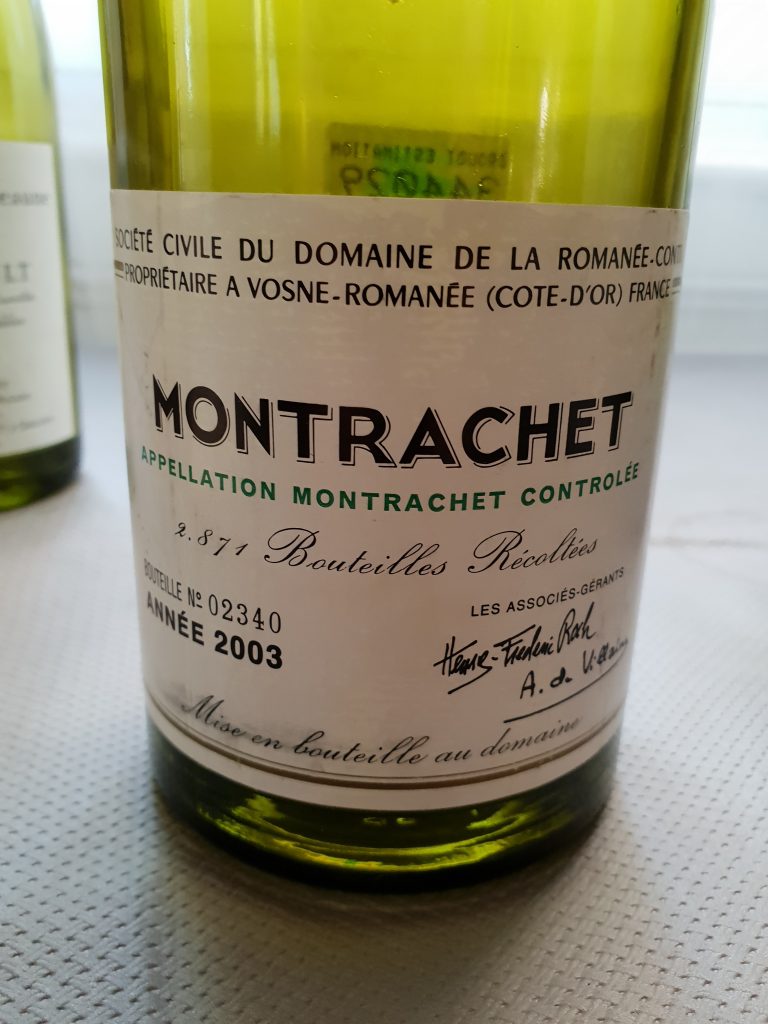
2003 Montrachet, DRC
Bright medium pale golden color. Beguiling, subtle nose with the oak very much under control.
Pure and mineral on the palate with restrained power, yet ethereal. Well-muscled, needs time, but quite the treat now. An experience.
2005 Bahans Haut Brion, Pessac-Léognan
This second wine no longer exists, replaced by Le Clarence.
Lovely deep color with a bouquet of coffee, vanilla, and cedar.
Big, strong, and youthful on the palate, but some medicinal notes there. Good rather than great.
1978 Haut Brion
Thinnish purplish rim. Lovely earthy bouquet with a strong Graves signature. Showing age on the palate and more interesting than vital with some rubbery overtones. As the Italians say “a wine of mediation”.
1958 Haut Brion
The color was light, but looked much younger than its years. The nose was smoky and unmistakably Haut Brion. In light of the vintage reputation, the wine should have been dead on arrival, but it was still alive. Although light, it was worthy of the château’s reputation. Most other Bordeaux in this vintage have turned to dust.
1989 Haut Brion
Deep vibrant color. Sleek, youthful nose that is still relatively closed at the present time. Splendiferous and polished on the palate, with lovely fruit, tannin, and acidity. Not a baby but, an adolescent. Tremendous velvety texture. All the majesty of the finest Bordeaux. Far from peak.
1953 Haut Brion
My birth year wine was, in my opinion, the best of an unforgettable series. The color was a bit diffuse, but no one would have guessed its age. The bouquet was redolent of truffles and oozed elegance, the sort of wine you could “nose” forever. It was resonant, long, and simply wonderful on the palate. Were I to give notes, this would be at the very top end of the scale. There are wines to equal this, but I cannot imagine any better.
1928 Haut Brion
One of the great vintages of the 20th century, back-to-back with 1929. The wine’s color would have thrown anyone for a loop, appearing at least two or three decades younger! The nose was exotic with mint, eucalyptus, plummy aromas, as well as some fortified wine (Madeira) notes. The wine was incredibly smooth and complex on the palate, but had – unsurprisingly! – lost much of its vigor. Drinking such a wine is like contemplating a Rembrandt or a Da Vinci painting, a work of art from another time period that demands respect. A hush came over the table and we were all delighted.
The next two wines were donated by the famous Parisian connoisseur and lover of old wines, François Audouze:
1948 Rauzan Ségla
The color was deep, beautiful, and almost disturbingly youthful (I’d have said a wine from the 1960s).
The ethereal and balsamic bouquet showed hints of gentle oxidation paradoxically well integrated with the fruit, along with slight raisiny quality and an “old library” smell. The nose needed to be appreciated in the third… or fourth degree.
The wine showed graphite overtones and was very silky on the palate and a little dry, but still vital. It also showed hints of leather. Seemed more butch than most Margaux.
1945 Léoville Las Cases
Although a little diffuse and having a somewhat watery rim, the color once again would have fooled (just about) anyone as to this wine’s age. The exuberant, sexy nose showed lovely cherry aromas, and there was something almost Burgundian about its sensuality. This was served alongside the Rauzan and the table was split as to which they preferred. I opted for the Léoville.
1982 Ausone
How many people you know would bring a 5-liter bottle of an 82 first growth to a dinner party? Well, this is exactly what Ian Amstadt of London did. And his gift to us all was very much appreciated. The color was quite fine, looking perhaps a tad older than its age. The nose was subdued at first, with some rose petal aromas, but came out over time to reveal sweet autumnal nuances. The wine spread out beautifully on the palate and shows that, as opposed to what some say, Ausone never went through an off-period when Pascal Delbeck was winemaker. When tasted the next day, the wine was even better. While approachable now, it has a long way to go, and was even better the next day. One of the guests with far more experience than me said that, although magnums are justifiably reputed to age more slowly than 75 cl. bottles, once you move up the scale, this is not true due to the rare outsize custom corks which, he said, don’t work as well.
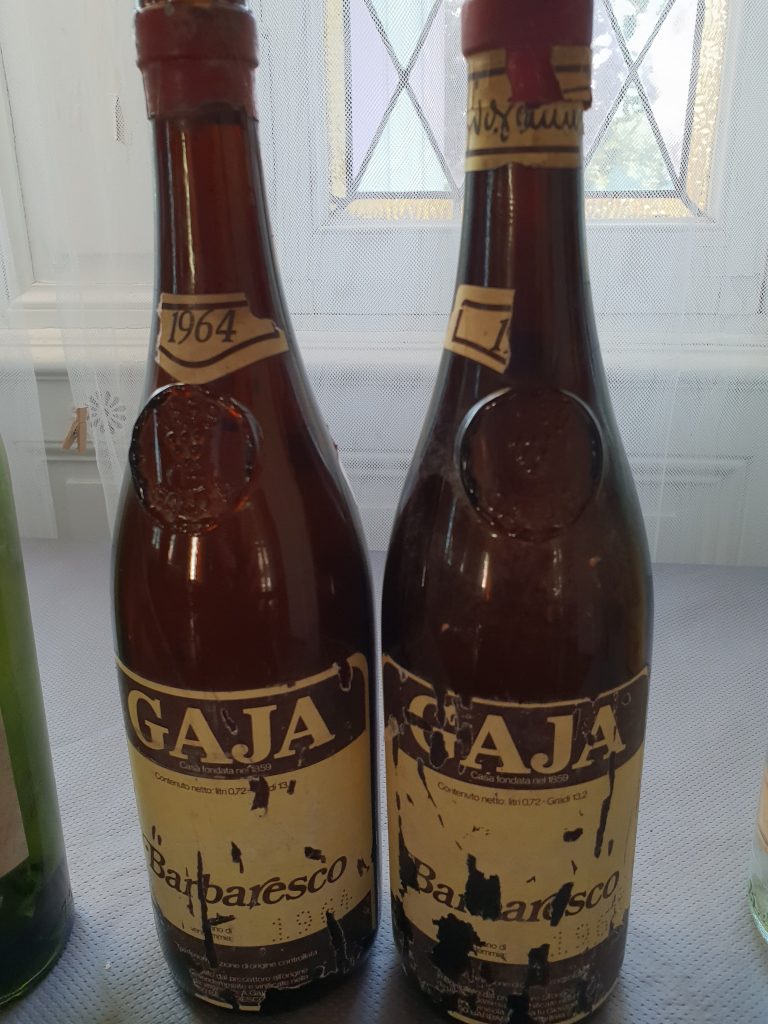
1961 Gaja Barbaresco
1967 Gaja Barbaresco
These were very much of a pair, with similar qualities. I preferred the 67. The color of both the wines was fairly pale and the nose very subtle and ethereal (rose petal). I thought both wines fell down somewhat on the palate where the acid edge took over, and I would have preferred them much younger.
1976 Yquem
Color was light amber. The bouquet was light, wafting, soft and understated. The wine was medium-bodied with lovely white fruit, yellow fruit, and vanilla flavors. Not overly sweet or rich. Exquisite. Fine now and will be just as good, although in a different way, for decades to come. Very successful.
1967 Yquem
There are only two Bordeaux wines I “covet”, i.e. I would like to taste before I go to the great wine cellar in the sky. One is 61 Palmer. The other was 67 Yquem. I was therefore delighted beyond words with the opportunity to taste this wine which thankfully wholly lived up to its reputation. The nose of barley sugar and botrytis was followed by the most exquisite flavor. The expression “iron fist in a velvet glove” is most often used to describe red wines, and yet I couldn’t help thinking of it for this Yquem. The flavour was both tangy and creamy with that tell-tale vanilla element. The aftertaste was of marathon length. Superb. I am well-known for giving low scores by other people’s standards. But if I were to rate this, it would be at the extreme end of the quality spectrum.
Dinner on 29/08/18 (17 wines for 14 people)
2011 Chablis grand cru Les Clos, Domaine Pinson
The color was normal for its age and the nose was lovely, with lemony overtones. The oak was well-integrated and the wine was mercifully not as sharp as some Chablis. I felt that it was firmly within its drinking window.
2002 Morey Saint Denis premier cru Les Buissières, Domaine Georges Roumier
Brownish rim with deep smoky Pinot leather bouquet. The wine was sleek, but too old on the palate with a shortish aftertaste. Disappointing in Iight of the producer’s reputation, and the vintage.
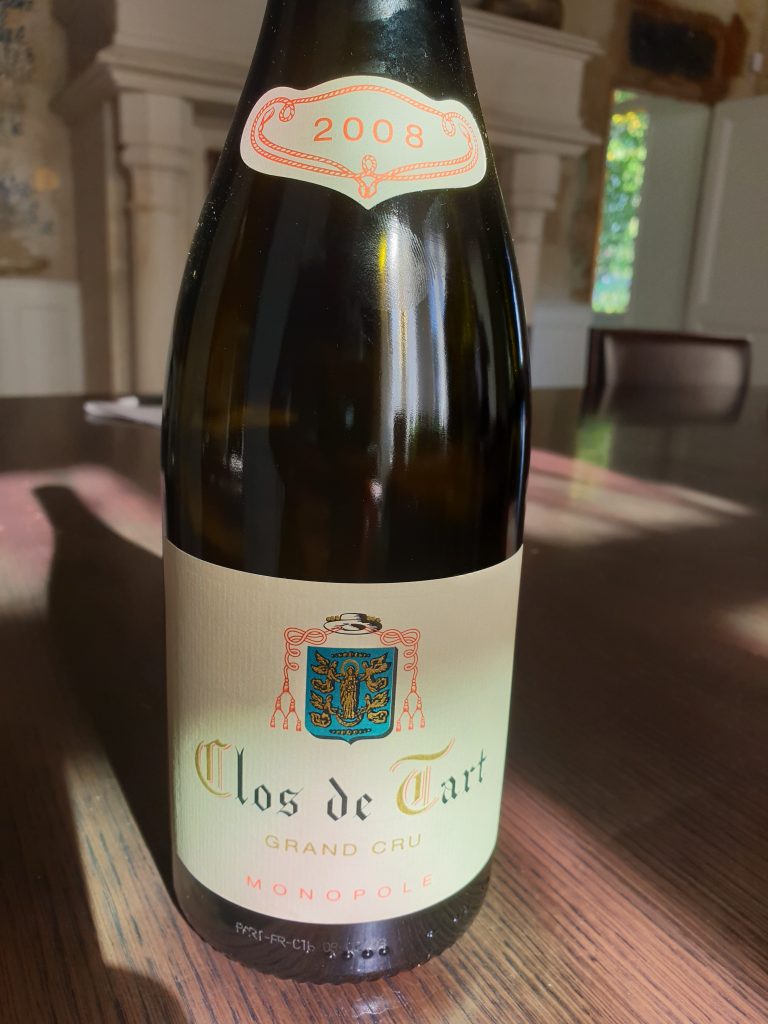
2008 Clos de Tart, grand cru
Good medium-deep color. Bewitching, pure, flawless bouquet. Very fresh on the palate with great tannin. Big, regal, well-made, and with a velvety texture. The structure I so often find missing in Burgundy is here. Great long aftertaste. We had two bottles. Some people said they detected a little acetic acid in the first (not me), but the second was marginally better.
2008 Littorai (Sonoma, California), Haven Vineyard
Color as expected for a wine of this age. Bouquet of buttery oak, slightly smoky, and with a herbaceous element. Fine varietal character with a caramel, almost sweet quality on the palate. Very good, but a little simplistic.
2007 Vosne Romanée Les Beaumonts (please forgive me for not noting the producer, will fill in later)
Medium-thin purplish rim. Nose a bit one-dimensional. Harsh and, to my mind, flawed on the palate.
1990 Le Chambertin, Domaine Rossignol-Trapet
Looking old and a bit turbid. Slightly porty on the nose, but better on the palate. Virile, strong, but lacking focus. Would have been better younger.
2001 Sociando Mallet, Cuvée Jean Gautreau, Haut-Médoc
This was served double blind. I guessed Saint-Julien and my better half guessed Saint-Estèphe. She was closer since Saint-Seurin-de-Cadourne is just a stone’s throw from Saint-Estèphe… Given a choice of four vintages, I was on the money though. The color showed some age, but with a very deep core. The nose was smoky, deep, and perfumed. This tasted quite fine.
2001 Pontet Canet, Pauillac
Colour was good and youthful. The bouquet was beautifully ripe, uplifting, and elegant. Some spiciness on the palate (cinnamon) and a graceful, smooth tannic structure. One of the stars of the evening. Pontet Canet has risen greatly in recent years but, even so, I didn’t expect this wine to be quite as good as it was.
2001 Latour à Pomerol
Fine color and a slightly odd nose with coffee and celery overtones. Very typical of its appellation on the palate. Big, almost massive and definitely rich. Probably a good time to drink this.
1959 Léoville Poyferré, Saint-Julien
Good color for its age with still some purplish highlights. What I call a very graham cracker bouquet with cosmetic and graphite components. Very interesting balance on the palate with rich tannin, but a fine backbone as well. The aromatics on the nose very much in evidence on the aftertaste.
1983 Château Latour, Pauillac
The wine appeared a little turbid and looked just about its age. The nose displayed sweet cedar and graphite nuances. The wine was big, round, and monumental on the palate. Cabernet Sauvignon at its very best. Long, imperious, and impressive. I see it as fine to drink now.
1982 Sociando Mallet, Haut-Médoc
Lovely vibrant color. Marked coffee-vanilla notes on the nose with some green pepper, but not too much. This mercaptan factor has been toned down over the years – it was overwhelming when the wine was young. This 82 Sociando is big and assertive on the palate and still has good ageing potential.
1982 Ausone, Saint Emilion
Retasted from the previous night, this wine had not lost one iota of its qualities and had, in fact, blossomed. Subtle, sophisticated, and seductive with a velvety texture, puckery aftertaste and refined sweetness. Tremendous.
1998 Léoville Barton, Saint Julien
Looking younger than its years, this had an attractive, but overly discreet nose. The taste was very much in keeping with the château profile – smooth and soft, but in this vintage the tannin is too unyielding, and not in a way that time will cure. Fine with food but on its own too tough. Best enjoyed sooner rather than later to take advantage of the fruit.
1988 Montrose, Saint Estèphe
Color OK for its 30 years. Ethereal, wonderful nose with touch of graphite. Proved to be a great Médoc on the palate, but lacks a bit of freshness and panache.
2001 Doisy Daënes, Barsac
Medium-deep amber-gold color. Very youthful bouquet with some tropical fruit (pineapple) overtones. Good acidity on the palate with lovely follow through. Very fine wine with sweetness well under control. The mineral touch on the aftertaste is still there and helps to make the wine so delicious.
1953 Doisy Daënes, Barsac
Deep amber color and a wonderful nose with hints of vanilla. The first impression on the palate is of a seemingly “fat” and sumptuous wine. However, the wine’s acid backbone kicks in and helps carry this wine into a super-long controlled aftertaste of sheer beauty.
The one wine not noted was from Tim’s birth year, a 1968 Lafite Rothschild. I knew it as a very light rosé in the 1970s and time had not done it any good since. But it is indicative of the extremely high level of all the other wines that it attracted little attention. Come to think of it, the percentage of off or corked bottles was very low, thank goodness.
An altogether phenomenal time!!!

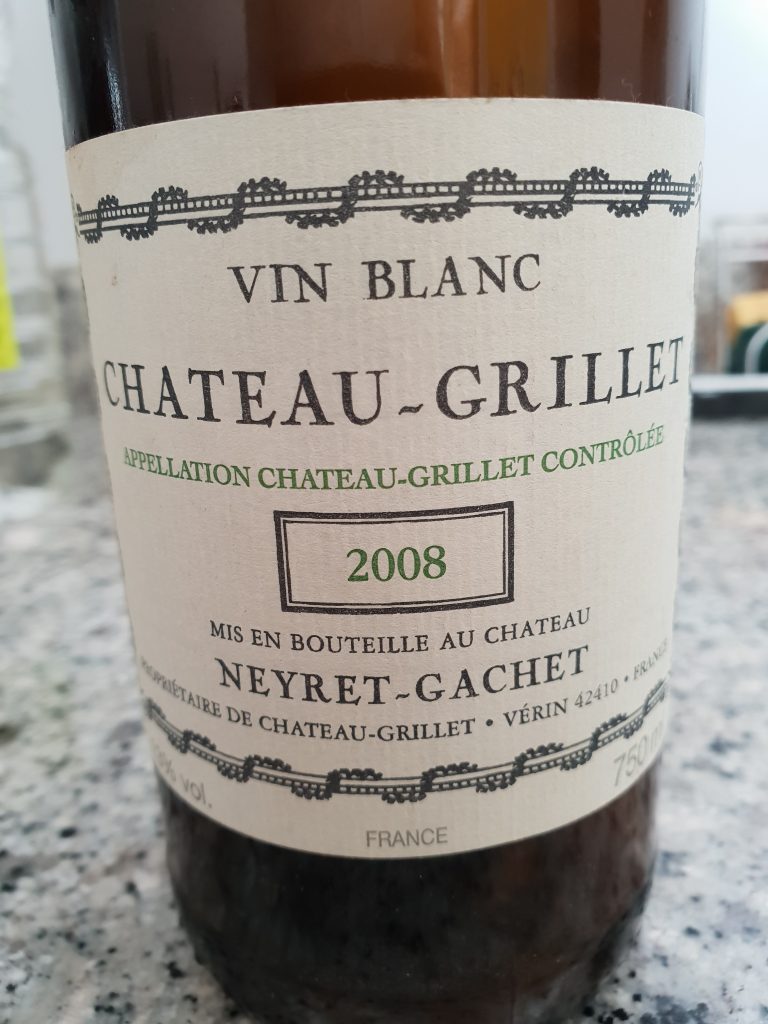

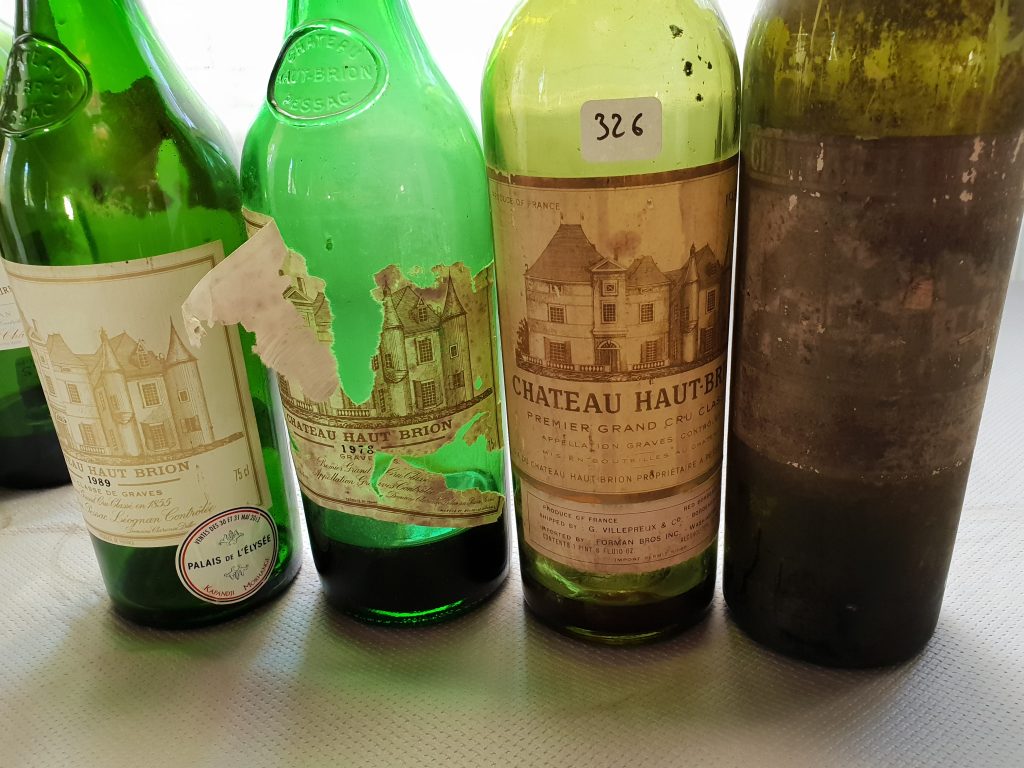
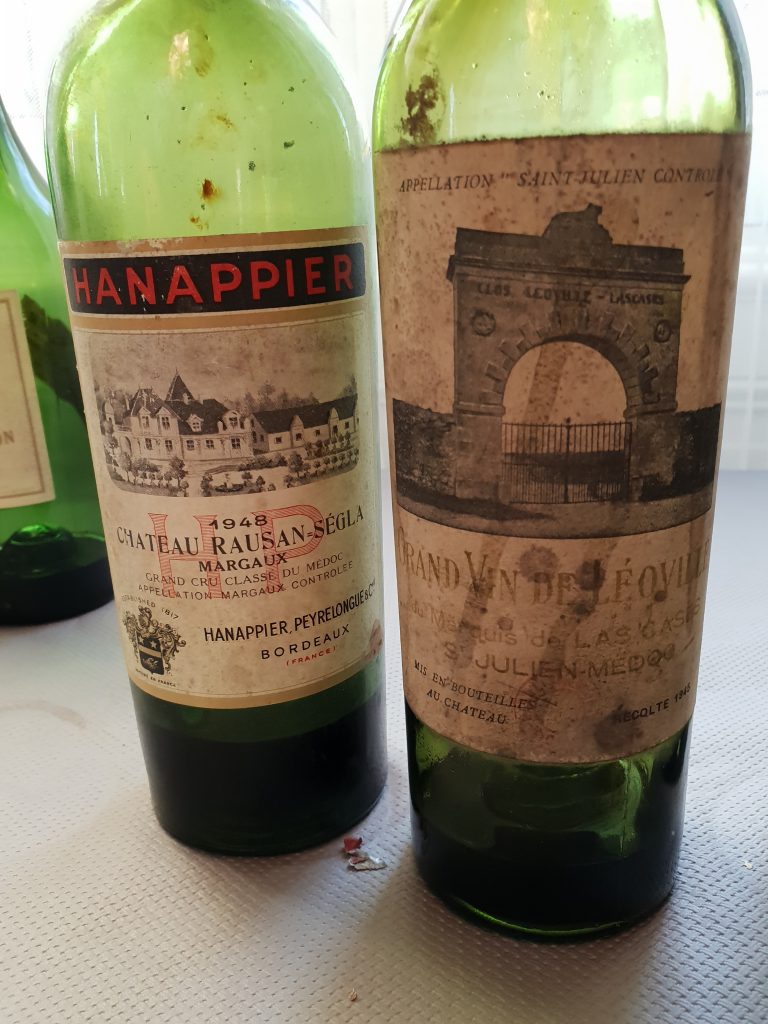
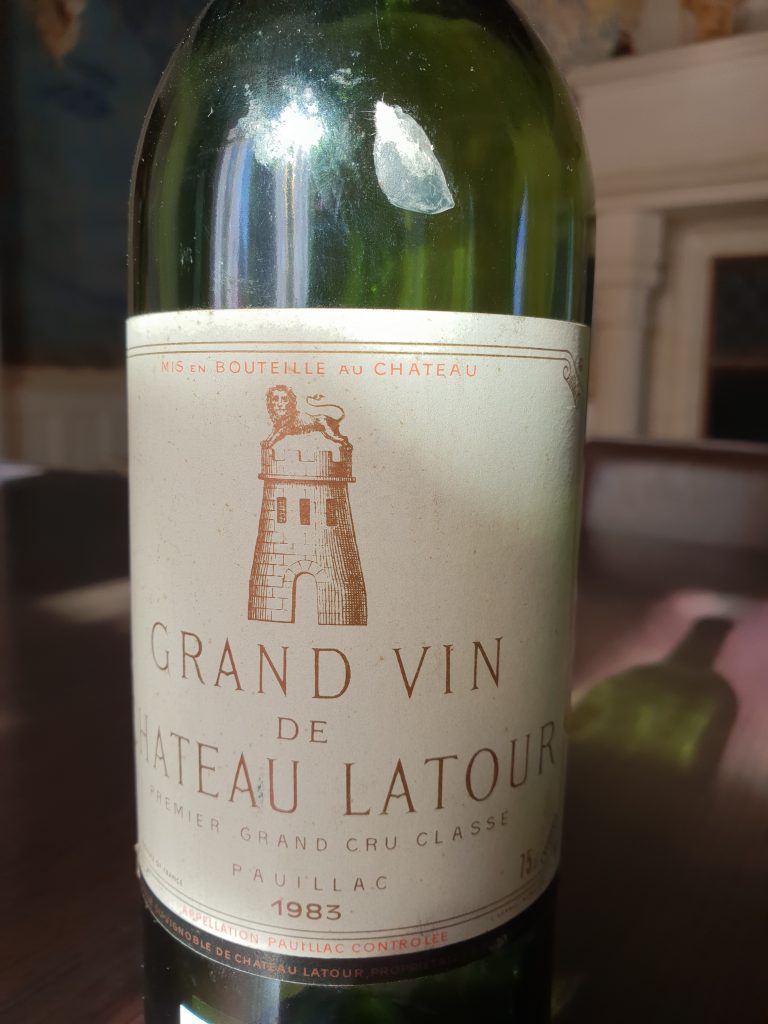
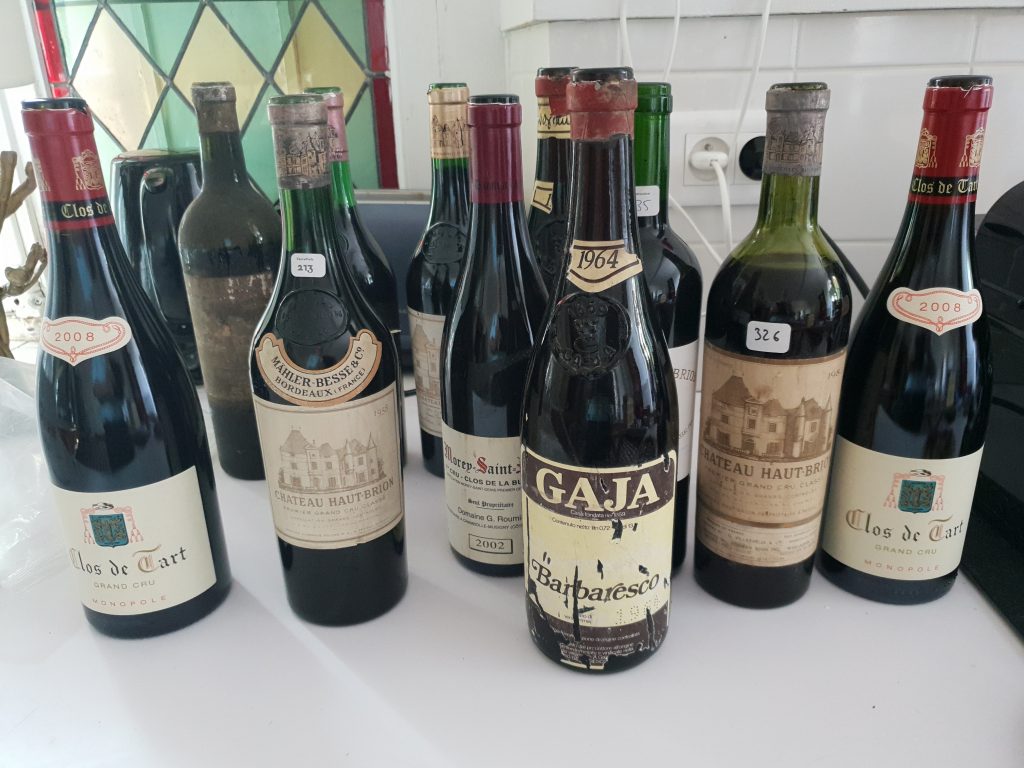
Aah, Alex. What a treat to read your words on these unforgettable wines. Your joy oozes out of every line. I almost feel I was there. Doing the lottery tonight for that 61 Palmer